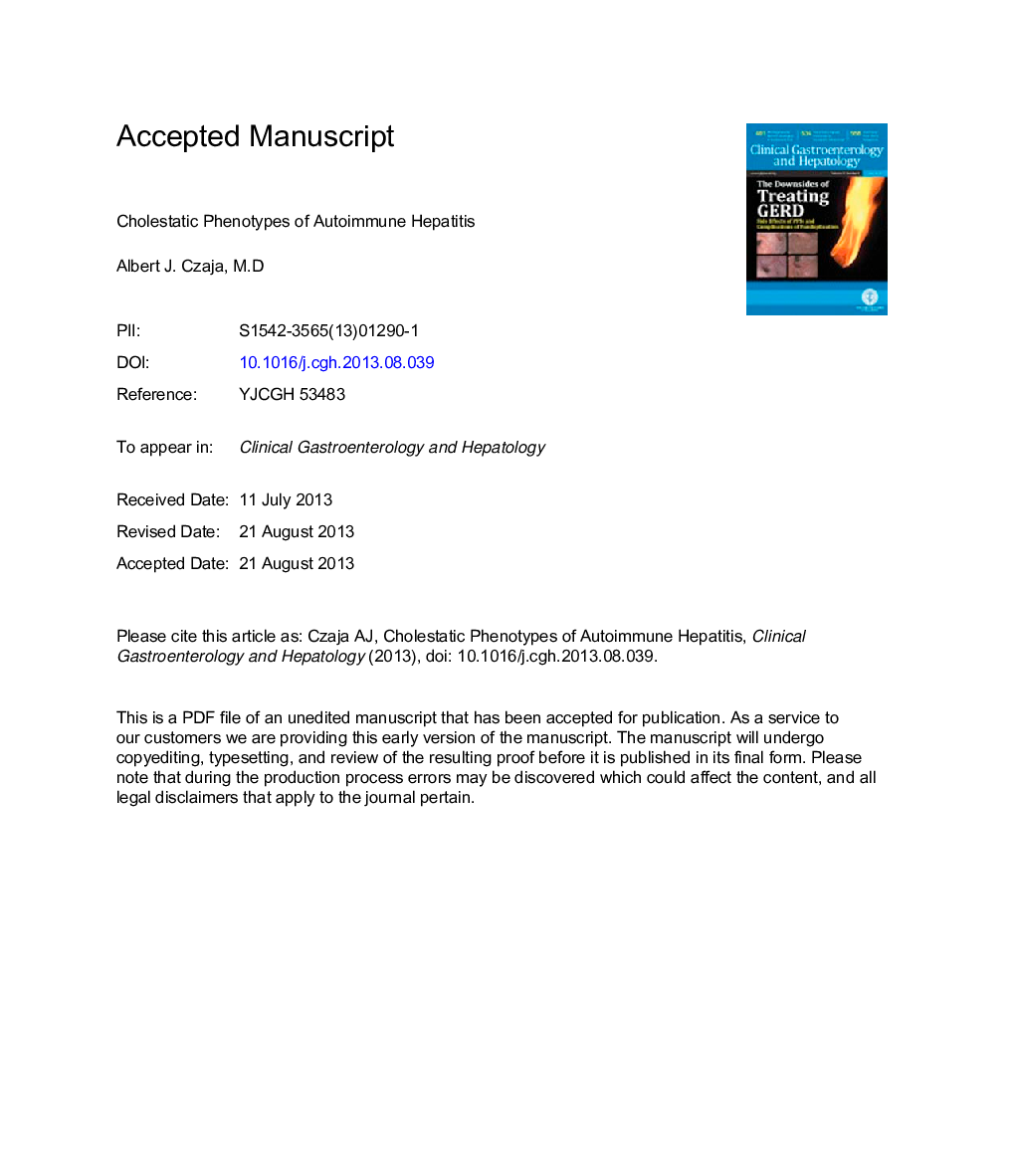| Article ID | Journal | Published Year | Pages | File Type |
|---|---|---|---|---|
| 3282531 | Clinical Gastroenterology and Hepatology | 2014 | 33 Pages |
Abstract
Autoimmune hepatitis can have cholestatic features that are outside the codified diagnostic criteria. These features have uncertain effects on the clinical presentation and progression of disease. Patients with autoimmune hepatitis can have antimitochondrial antibodies and coincidental bile duct injury or loss (2%-13% of patients), focal biliary strictures and dilations based on cholangiography (2%-11%), or histologic changes of bile duct injury or loss in the absence of other features (5%-11%). These findings probably represent atypical manifestations of autoimmune hepatitis or variants of primary biliary cirrhosis or primary sclerosing cholangitis, depending on the predominant findings. Serum levels of alkaline phosphatase and γ-glutamyl transferase, histologic features of bile duct injury, and findings from cholangiography are associated with responsiveness to corticosteroid therapy and individualized alternative treatments. Corticosteroid therapy, in combination with low-dose ursodeoxycholic acid, has been promulgated by international societies, but these recommendations are not based on strong evidence. The frequency, variable outcomes, and uncertainties in diagnosis and management of the cholestatic phenotypes must be addressed by a collaborative investigational network. This network should define the genetic and pathologic features of these disorders, standardize their nomenclature, and establish a treatment algorithm. In this review, the different cholestatic phenotypes of autoimmune hepatitis, mechanisms of pathogenesis, current management strategies and outcomes, and opportunities for improving understanding and therapy are presented.
Keywords
Related Topics
Health Sciences
Medicine and Dentistry
Gastroenterology
Authors
Albert J. Czaja,
